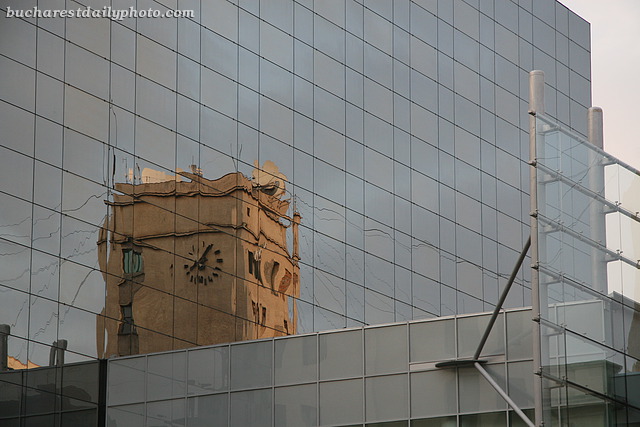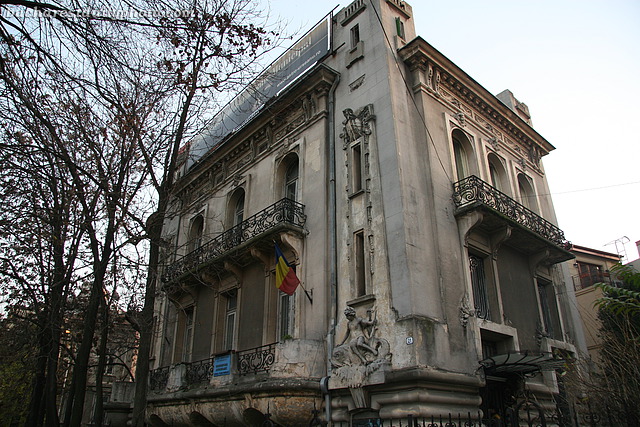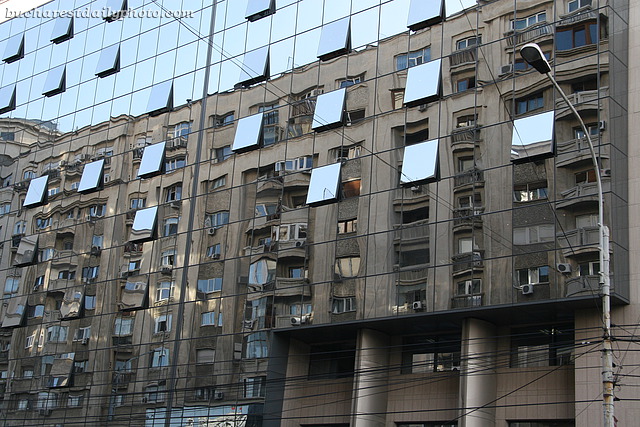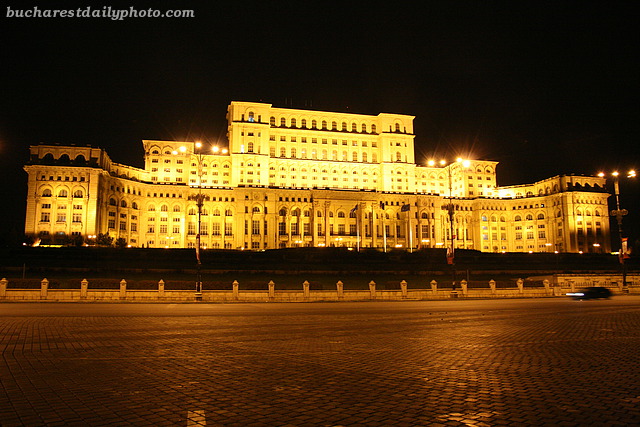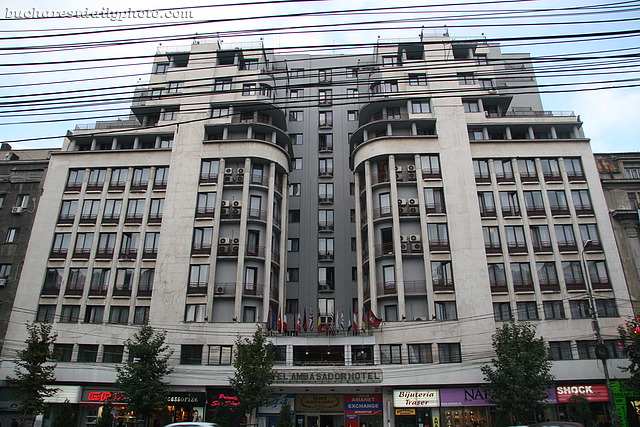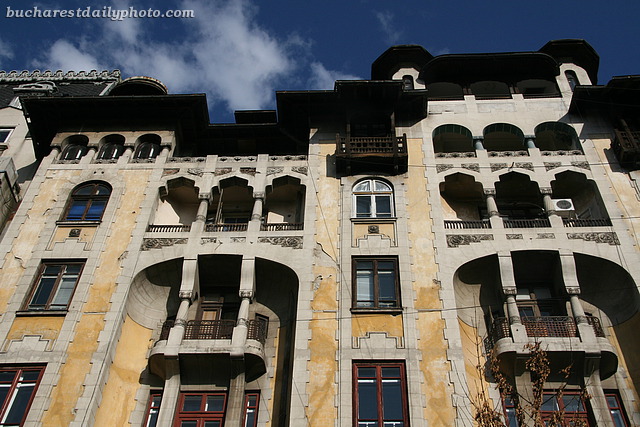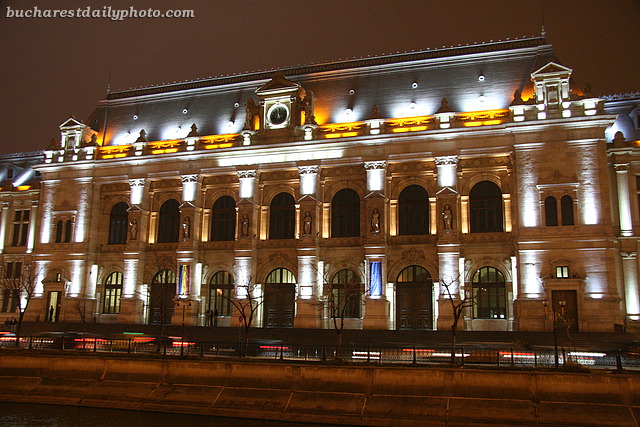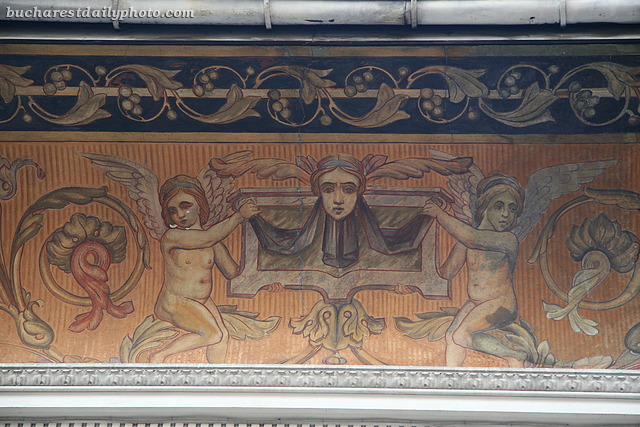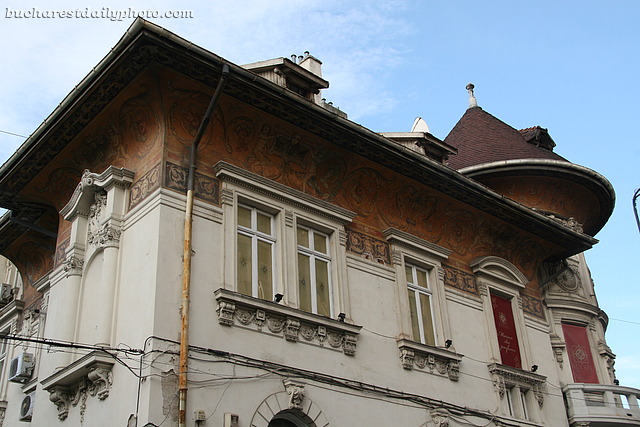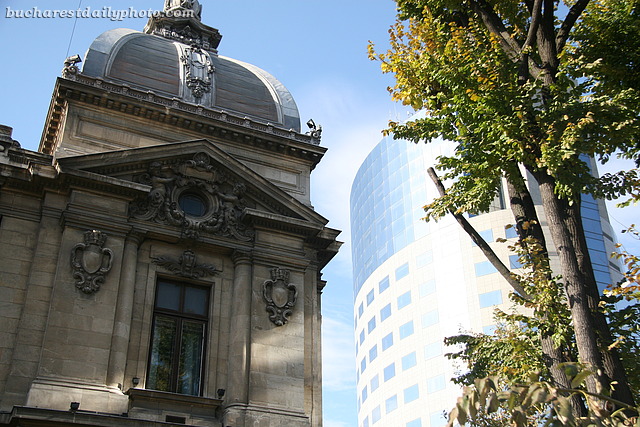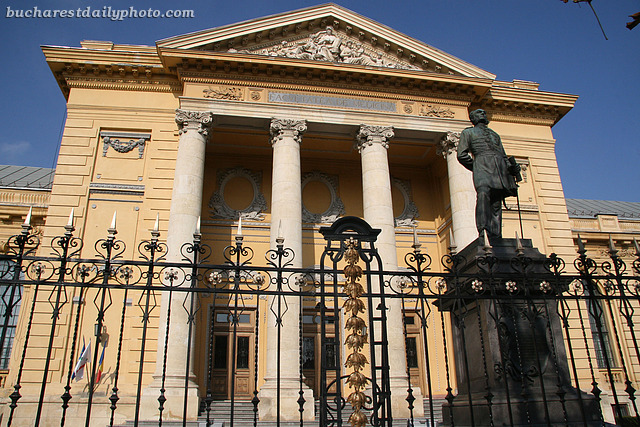As I said in one of my previous posts, I’m a sucker for reflection photos. I believe that in photography reflections can bring out amazing effects and make us look at things through a different perspective. So here is another one of my tries at getting a nice reflection photo. This one was taken in downtown Bucharest and it shows the tower of the modernist Adriatica office building (1936) reflected at sunset in the Novotel Hotel.
The statues from four days ago belong to the building shown in today’s photo: the Astronomical Observatory of Bucharest, a beautiful house located on Lascăr Catargiu boulevard. It was built during the years 1908-1910 by architect I. D. Berindei for Admiral Vasile Urseanu (1848-1926). The Admiral’s passion was astronomy and he was the president of the first astronomical society of Bucharest, established in 1908. The house, built from the admiral’s personal funds and used by the society, has an astronomical cupola in its highest point (not visible in the photo) and was endowed by Urseanu with a telescope. After the death of the admiral the house passed to his wife who in 1933 donated it to the state to be used as the city’s first Art Galley (Pinacoteca). The Astronomical Observatory and Bucharest’s Art Gallery coexisted in the building until 1949 when the paintings were moved to the National Gallery and the Museum of City of Bucharest. The observatory is open for public.
For today a grim communist style tenement block reflecting in a dull glass building, the kind that nowadays you can see all around the world. Architectural boredom at its best, but part of Bucharest too and this is why I decided to show them.
I’m still trying to come to peace with this cold giant who became a symbol of Bucharest. To me the Palace of Parliament will always be a glimpse into Romania’s communist past. Here it is for you (again): surreal in size and probably consuming as much electricity as 100 villages.
Back in September I’ve talked a bit about Magheru boulevard and its beautiful between the wars architecture. For those who enjoy seeing Modernist and Art Deco architecture this boulevard is a feast; most of the buildings that line it were built in the 20s and 30s. I’ll try showing here a few of the most notable examples. First one comes from Arghir Culina, the architect who designed the building from yesterday’s post. He also designed the building that is the subject of today’s photo, the 12 floors Ambasador Hotel, which was built between the years 1937-1938 and inaugurated in 1939. This hotel has an interesting U-shaped design with the upper floors receded.
And yes, you can also see here the ubiquitous cables 🙂
Let’s move from the French Renaissance palace to a modern office building. Today’s photograph shows part of a beautiful building located on Hristo Botev close to Rosetti Square. It was built as an office building during the years 1925-1928 by architect Arghir Culina. The owner of the building was the architect himself, Culina being also a successful entrepreneur.
The Palace of Justice was built between the years 1890-1895 in French Renaissance style. It was designed by the French architect Albert Ballu and the interiors were finished by Ion Mincu. What you can see in today’s photo is the main facade, with its six pillars and the law themed statues bearing names like “Law”, “Justice”, “Truth” etc. created by the sculptor Karl Stork. Because it was built on fragile ground on the banks of river Dâmboviţa, the building has been again and again damaged by earthquakes and had to be consolidated many times. The last major restoration took place between the years 2003 and 2006. I still wonder how it escaped the Civic Center demolitions during Ceauşescu’s regime.
Today’s photo shows a close-up of an outside mural that belongs to a beautiful house I spotted on one of my Sunday strolls. According to one source I found on the web (in Romanian), painting murals on the outside of houses was a fashion imported from Italy, present in Bucharest between the years 1905-1915. The house is on Take Ionescu Street, close to Lahovari Square.
I’ve talked about the contrast shown in today’s photo in on older post, the old bank rubbing elbows with the new business center (a former bank), but the picture was taken from afar and I thought it would be nice to show you a close-up as well.
The first medical school was established in Romania in 1857, by a French expatriate medic by the name of Carol Davila (1828-1884). The healthcare system in Romania had been in existence since around 1700 but the doctors were schooled abroad in countries like France, Italy or Austria. As a side note, today it’s the other way around, doctors get schooled in Romania and go to practice abroad. In 1869 the National School of Medicine and Pharmacy became a department of the University of Bucharest and the first doctoral degrees were granted in 1873. In 1903 the school got a new building, which you can admire in today’s photo, designed in French neoclassical style by Louis Blanc. Fittingly, the statue that appears in front of the main entrance is of Carol Davila. It was created by the sculptor Carol Storck.
